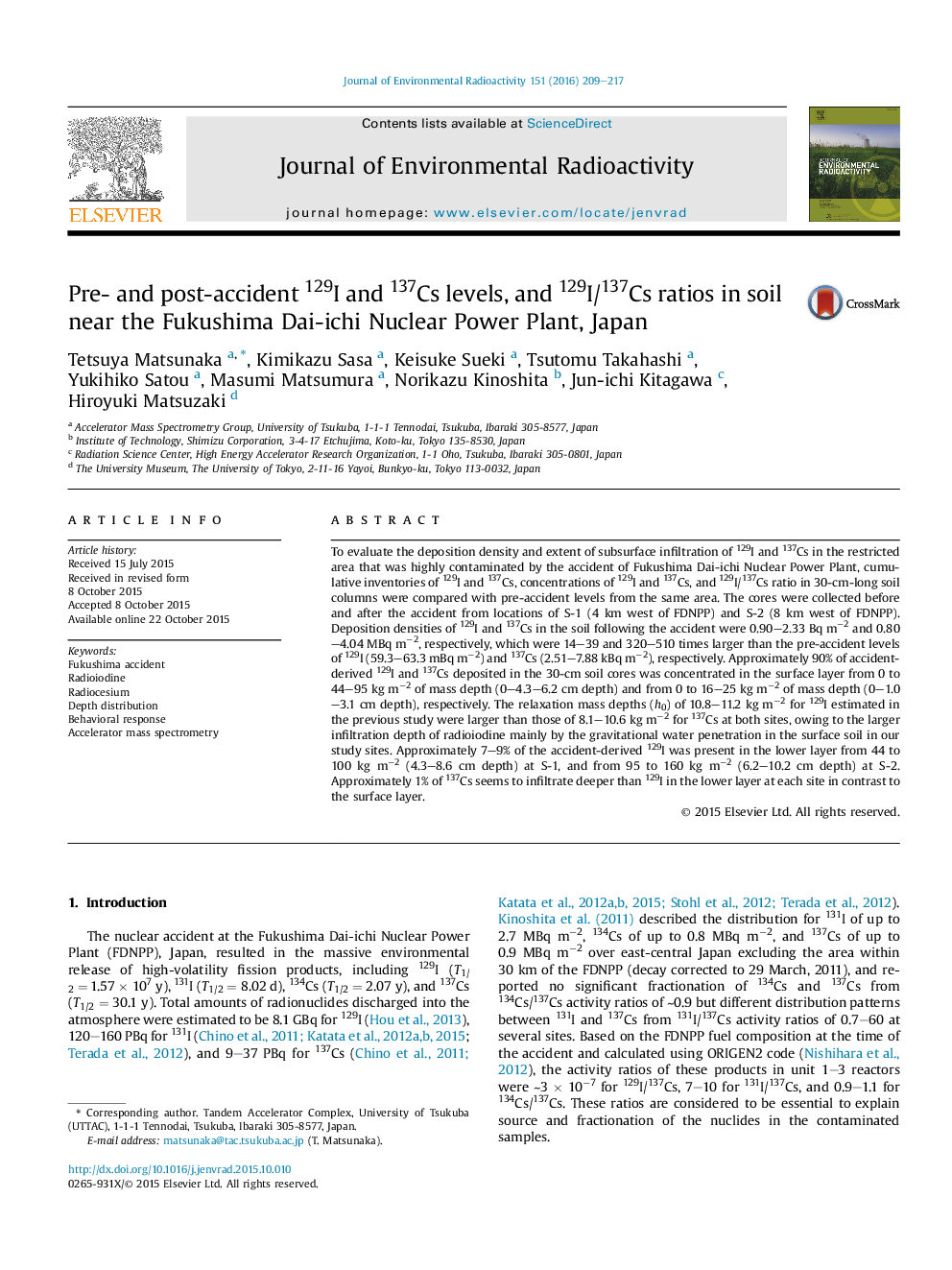| Article ID | Journal | Published Year | Pages | File Type |
|---|---|---|---|---|
| 10686612 | Journal of Environmental Radioactivity | 2016 | 9 Pages |
Abstract
To evaluate the deposition density and extent of subsurface infiltration of 129I and 137Cs in the restricted area that was highly contaminated by the accident of Fukushima Dai-ichi Nuclear Power Plant, cumulative inventories of 129I and 137Cs, concentrations of 129I and 137Cs, and 129I/137Cs ratio in 30-cm-long soil columns were compared with pre-accident levels from the same area. The cores were collected before and after the accident from locations of S-1 (4 km west of FDNPP) and S-2 (8 km west of FDNPP). Deposition densities of 129I and 137Cs in the soil following the accident were 0.90-2.33 Bq mâ2 and 0.80-4.04 MBq mâ2, respectively, which were 14-39 and 320-510 times larger than the pre-accident levels of 129I (59.3-63.3 mBq mâ2) and 137Cs (2.51-7.88 kBq mâ2), respectively. Approximately 90% of accident-derived 129I and 137Cs deposited in the 30-cm soil cores was concentrated in the surface layer from 0 to 44-95 kg mâ2 of mass depth (0-4.3-6.2 cm depth) and from 0 to 16-25 kg mâ2 of mass depth (0-1.0-3.1 cm depth), respectively. The relaxation mass depths (h0) of 10.8-11.2 kg mâ2 for 129I estimated in the previous study were larger than those of 8.1-10.6 kg mâ2 for 137Cs at both sites, owing to the larger infiltration depth of radioiodine mainly by the gravitational water penetration in the surface soil in our study sites. Approximately 7-9% of the accident-derived 129I was present in the lower layer from 44 to 100 kg mâ2 (4.3-8.6 cm depth) at S-1, and from 95 to 160 kg mâ2 (6.2-10.2 cm depth) at S-2. Approximately 1% of 137Cs seems to infiltrate deeper than 129I in the lower layer at each site in contrast to the surface layer.
Keywords
Related Topics
Physical Sciences and Engineering
Energy
Nuclear Energy and Engineering
Authors
Tetsuya Matsunaka, Kimikazu Sasa, Keisuke Sueki, Tsutomu Takahashi, Yukihiko Satou, Masumi Matsumura, Norikazu Kinoshita, Jun-ichi Kitagawa, Hiroyuki Matsuzaki,
